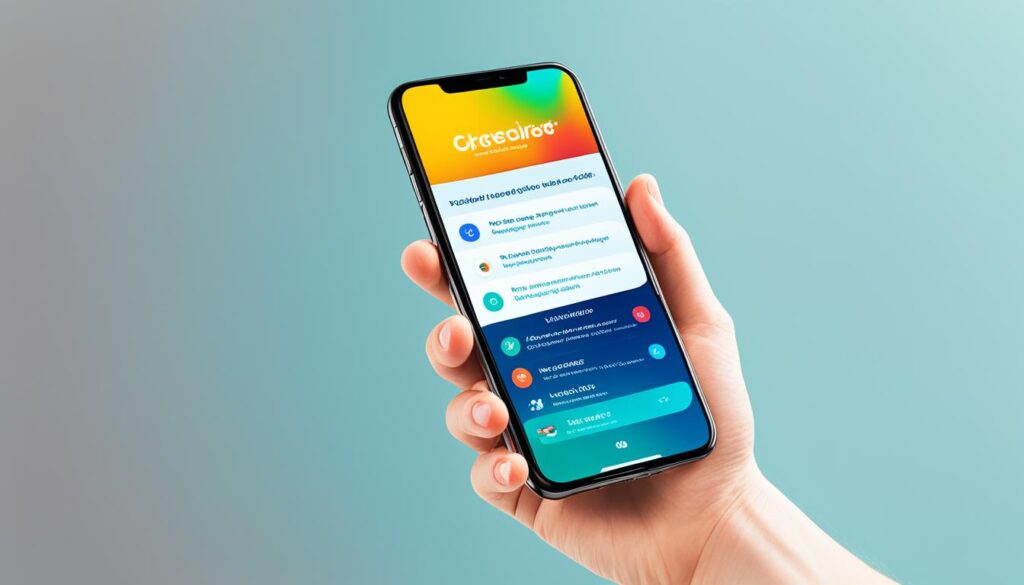Did you know that organic search brings in 53% of all website traffic1? With trillions of searches every year, SEO is key for businesses wanting to grow online. It helps your site show up more in search results, bringing in more visitors and helping you meet your goals like more sales1.
Google uses crawlers to find and add pages to its index automatically2. To get your site on Google, follow SEO best practices from Search Essentials2. This means using the right keywords, getting quality backlinks, and making your site easy for search engines to read.
Changes to your site can take a few hours or several months to affect search results2. But, stay patient and keep working on SEO. By making your content fresh, using clear URLs, and cutting down on duplicates, your site will get better in search results over time2.
This guide covers the basics of SEO, like keyword research, on-page optimization, link building, and content marketing. By using these strategies and keeping up with SEO trends, you can make your website successful in the digital world.
Key Takeaways
- SEO drives over half of all website traffic and is crucial for online success
- Follow Google’s Search Essentials to optimize your website for search engines
- Focus on keyword research, on-page optimization, link building, and content marketing
- Be patient and consistent in your SEO efforts, as results can take time
- Stay informed about the latest SEO trends and algorithm updates to maintain your competitive edge
Understanding Search Engine Optimization (SEO)
In today’s digital world, having a strong online presence is key for businesses to succeed. SEO helps websites become more visible, draw in organic traffic, and boost conversions. Google, with about 83% of the global market share3, greatly affects SEO strategies. It processes billions of search queries daily, showing how big and important SEO is3.
What is SEO?
SEO means making a company more visible in search results. It improves a website’s ranking by optimizing on-page and off-page elements. Google uses bots to find and index web pages, checking their content and relevance4. The main goal of SEO is to get a website to the top of search results for certain keywords. Being the top result is 10 times more likely to get a click than being in the tenth spot4.
Why is SEO important for your website?
SEO is key for bringing more visitors to a site, which can lead to more customers and sales. With 40-60% of search traffic going to the top result5, and only 2-3% looking beyond the first page5, high rankings are vital. SEO helps a brand stand out throughout the buying process.
Search engines aim to give users the best answers or info. They look at query meaning, content relevance, quality, usability, and context to show the right info. Good content is detailed, unique, and meets E-A-T signals (Expertise, Authoritativeness, Trustworthiness). It should also be easy to read4. Google also values site security, speed, mobile-friendliness, and ease of use for better rankings4.
By investing in SEO, businesses can boost their search visibility, draw in targeted traffic, and build a strong online presence. This leads to more brand awareness, higher conversion rates, and long-term success online.
Keyword Research and Targeting
Effective keyword research and targeting are key to a successful SEO strategy. By finding the right keyword phrases and using them in your website’s content, you can boost your search engine rankings. Semrush, a top SEO tool, has over 25.7 billion keywords6, making it one of the biggest out there6.
Identifying relevant keywords
Start by thinking about how your audience might search for your products or services. Imagine what they might type into a search engine. Tools like Semrush can give you great keyword ideas and help you see their potential. Choose keywords with high search volumes to draw more traffic to your site6.
Long-tail keywords and their importance
Long-tail keywords are more specific and target a smaller audience. They might have fewer searches but have less competition and attract better leads. For instance, instead of “dog food,” aim for “healthy dog food for senior dogs.” Keywords like “healthy dog food” might be tough to rank for, but long-tail versions can be easier and still bring valuable traffic.
Keyword placement in content
After picking your keywords, place them smartly in your website’s content. Google looks at content relevance as a top factor for search rankings67. Make sure your content is the top answer for a query to boost your chances of ranking well7. Use your keyword phrases in page titles, headings, and the main text. But don’t overdo it, as that can hurt your rankings.
Create content that’s authoritative and informative, covering your target keywords fully. Google likes sources that are seen as trustworthy7. By making high-quality, keyword-rich content, you can rank for more keywords and draw organic traffic to your site.
On-Page Optimization
On-page SEO, also known as on-site SEO, is key for making webpages and content better for search engines and users89. It makes various parts of a website better to improve search engine ranking and traffic9. Google’s algorithm looks at three main things: on-page SEO, off-page SEO, and technical SEO9.
Title Tags and Meta Descriptions
Title tags and meta descriptions are vital for on-page optimization. Page titles should have focus keywords to tell search engines and users what the content is about9. Keywords in title tags help users and search engines understand the page’s content8. Meta descriptions give a brief summary of the page to make users want to click on it8. Even though meta descriptions don’t directly affect ranking, they can increase click-through rates9.
Header Tags (H1, H2, H3)
Header tags like H1, H2, and H3 are important for organizing your content for users and search engines. They help structure a page for both readers and search engine bots8. Headers in HTML content make it easier for readers and search engines to understand the information9. Using keywords in H1 tags, first paragraphs, and subheaders helps search engines understand the content better8.
Content Optimization
Creating content that is valuable and meets user needs is key for on-page SEO8. Search engines use keywords and on-page SEO elements to see if a page matches what a user is searching for8. Doing keyword research is important for making content that matches user search intent9. Using less competitive long-tail keywords can make it easier to rank8.
Image Optimization and Alt Tags
Optimizing images and using alt tags is important for on-page SEO. Visual content like images, graphics, and charts helps make websites more engaging9. Always describe your images and videos with alt tags to help search engines find your page8. Alt-text helps search engines understand what the images are about, which can improve ranking9.
| On-Page SEO Element | Importance |
|---|---|
| Title Tags | High |
| Meta Descriptions | Medium |
| Header Tags (H1, H2, H3) | High |
| Content Optimization | High |
| Image Optimization and Alt Tags | Medium |
Using Schema.org markup can make rich snippets better and help your content stand out in search results. Structured markup makes your content more visible on search engines and social media9. Also, internal links are key for search engines to understand your site’s structure and find new pages8. Internal links within content keep users interested and tell search engines your content is valuable9.
Link Building Strategies
Link building is key to SEO, boosting domain authority and rankings to draw more visitors10. It involves steps like finding potential link sites, making quality content, and reaching out personally11.
To make a site link-worthy, focus on creating content that adds value to your audience. This could be blog posts, infographics, videos, or original research12. Using relevant keywords can also boost your content’s SEO.

Look for links from sites with high authority and relevance. Links from respected news sites or industry leaders can greatly improve your rankings12. Make sure the content is relevant to your site to increase the link’s value12.
Anchor text is important in link building. Google sees it as a signal for link relevance12. When asking for links, suggest anchor text that fits your content well.
Guest blogging is a great way to get backlinks. It lets you share your knowledge and connect with others in your field1110.
Here are ways to make your link building better:
- Do thorough research to find sites that match your audience and content11
- Make content like infographics and videos that people want to share10
- Use influencer marketing to reach new people and get more links10
- Share your content on social media to get more eyes on it and links11
Link building takes ongoing work to see results in your SEO10. Focus on making quality content, connecting with authoritative sites, and using various link building methods. This will help improve your site’s rankings and bring in more organic traffic.
Content Marketing for SEO
Content marketing and SEO work together to make your website more visible and attract more visitors. By making great content with the right keywords, you can boost your site’s search engine ranking. This means more people will find your site easily13.
Creating high-quality, engaging content
Good SEO starts with making content that draws people in and makes your site stand out. Content that engages people and ranks higher is key. It should be easy to read, informative, and up-to-date14.
Longer content often ranks better, showing people like detailed info in one place14.
Content types that boost SEO (blog posts, infographics, videos)
Use different content types like blog posts, infographics, and videos to grab attention and improve SEO. Blog posts let you share deep insights and be a thought leader. Infographics are easy to share and make hard topics simple. Videos are popular and help keep people on your site longer.
| Content Type | Benefits for SEO |
|---|---|
| Blog Posts | In-depth information, keyword targeting, internal linking |
| Infographics | Highly shareable, attract backlinks, improve engagement |
| Videos | Improved user experience, increased time on site, video snippets in search results |
Incorporating keywords naturally
Think about what words people might search for to find your content. Use those keywords in a natural way. This helps your content show up in search results for the right reasons14. But don’t overdo it with keywords, as that can hurt your rankings and user experience. Focus on making content that really speaks to your audience’s needs.
Keeping your content fresh and up-to-date is key. It shows your site is current and relevant. Most content and SEO experts say updating often helps improve rankings15. Using both SEO and content marketing together brings more traffic, engagement, and conversions than using just one13.
Content marketing aims to educate and entertain audiences, usually in a less promotional manner than other marketing forms15.
By making great content that fits your audience and uses keywords well, you can boost your SEO and get more quality visitors to your site.
Technical SEO Considerations
To make your website better and more visible online, focus on technical SEO. This part of SEO is key, focusing on code-level tweaks and making your site easy for search engines to read16. By improving these technical aspects, you help search engines better understand and rank your site.
Site Speed and Performance
How fast your site loads is key for both users and search engines. Google says that how fast your site loads matters for both mobile and desktop searches17. To speed up your site, try these tips:
- Make images and other media load faster
- Reduce the number of HTTP requests and use browser caching
- Use a content distribution network (CDN) for faster loading17
- Check and improve your site’s speed with tools like Google’s PageSpeed Insights, which scores your site from 0 to 10017
Mobile-Friendliness and Responsive Design
More people use mobile devices, so making your site mobile-friendly is a must for SEO and user experience. Google now looks at mobile versions of sites first17. Use responsive design to make your site work well on all devices. Here are some tips:
- Make your site easy to use on small screens
- Make sure touch elements are easy to tap and click
- Use Google’s Mobile-Friendly Test to check how mobile-friendly your site is
- Think about using Accelerated Mobile Pages (AMP) for quicker loading on mobile
XML Sitemaps and Robots.txt
XML sitemaps and robots.txt files help search engines find and index your site’s pages. XML sitemaps list all your site’s pages, helping search engines index them faster. Robots.txt tells search engine bots which pages to skip.
Using XML sitemaps and robots.txt well can make your site easier for search engines to crawl and index.
Here are some tips for improving your site’s technical SEO:
| Technical SEO Element | Best Practices |
|---|---|
| HTTPS | Get an SSL/TLS certificate for a secure connection and better trust. HTTPS has helped with rankings since 201417. |
| Canonical Tags | Use the canonical tag to tell Google which page to index and rank, avoiding duplicates17. |
| Site Architecture | Organize your site’s pages logically to help crawlers and users17. Use simple and clear URLs. |
| Noindex Tag | Use the “noindex” tag to keep specific pages out of Google’s index when needed17. |
Focus on technical SEO areas like site speed, mobile friendliness, XML sitemaps, and crawlability for better search engine performance. Technical SEO experts work on making your site accessible, checking how it’s crawled, analyzing metadata, ensuring security, using structured data, and managing internal links16. Keep an eye on these technical parts to stay competitive in search engine rankings.
Local SEO Tactics
Local SEO is key for businesses wanting to draw in customers in their area. Google shows billions of local search results every month, showing them when people look for things nearby18. To top the local search, businesses need strong local SEO plans18.
Google My Business Optimization
Getting your Google Business Profile right is vital for local SEO. Make sure your info is correct, like your name, address, phone, website, hours, and reviews. Google looks at how relevant, close, and well-known your business is when showing you in Google Maps and the local pack18. A good Google Business Profile can get you higher rankings and more customers18. Answering Google reviews can also help your ranking18.
According to a 2023 survey, 84% of people trust online reviews as much as personal advice19. Try to get at least 10 5-star reviews on your Google Business Profile to get more visibility and bring in more customers19. You can also link to one social media profile from your Google Business Profile, like Facebook or Instagram, to get more people involved19.
Local Citations and Directories
Listing your business in online directories is important for local SEO. Make sure your contact info is the same everywhere to look legit18. Tools like Semrush’s Listing Management can help spread your local listings around18.
Geo-Targeted Content and Keywords
Make content that talks about your area to draw in local customers. Use Google Autocomplete to find good keywords and Google Keyword Planner for search data in your area18. Remember, your title tags should be 50 to 60 characters, and your description tags about 160 to 20019.
It’s a good idea to have separate pages for each service you offer19. Use local keywords in your content to make it more relevant and useful. Google looks at this when deciding where to show your website18.
| Local SEO Tactic | Importance |
|---|---|
| Google My Business Optimization | Improves visibility, rankings, and customer engagement |
| Local Citations and Directories | Enhances legitimacy and consistency across platforms |
| Geo-Targeted Content and Keywords | Attracts customers in specific service areas |
| Online Reviews | Builds trust and increases likelihood of customer visits |
Using these local SEO tips can make your business more visible in local searches. It can bring in more customers and grow your online presence. Semrush’s Review Management tool can help manage reviews and reply to them with AI, making it easier18.
Voice Search Optimization
Voice search is getting more popular, making it key to optimize your site for how people talk. With 20% of mobile searches now by voice, thanks to Google20, and over 1 billion voice searches monthly21, voice search is here to stay.
To get ready for voice search, use long-tail keywords that sound like real speech. These keywords have more than three words and are less competitive20. Put these keywords in your content, especially in answers to common questions.

Think about the most common questions people ask when making content for voice search. Use the five Ws (who, what, when, where, why) and how20. Make your content clear and engaging. Using keywords in press releases and SEO strategies can boost your online presence20.
Voice search is big for businesses. Brands that use voice search see a 30% increase in digital sales yearly21. Sales from voice search are over $2 billion now and could hit $40 billion by 202421. More than 55% of people use voice search to find local businesses21.
Younger users, like Gen Alpha, love voice search for everyday tasks and fun activities22. They want quick answers and like using voice assistants for entertainment22. As AI makes voice search better, businesses need to keep up22.
Voice search is changing how people act and is making industries adapt to new ways of interacting online22.
Optimizing for voice search helps users with visual impairments and reaches more people22. It also puts your brand ahead in the digital world. As voice search shapes SEO’s future, using conversational keywords is crucial.
Mobile Optimization Best Practices
Today, making your site mobile-friendly is key for SEO and website success. With over 60% of search visits from mobile devices23, and up to 90% in some fields24, focusing on mobile is a must. It helps keep your site competitive and ensures a smooth user experience.
Google now looks at the mobile version of websites first23. This means mobile optimization is vital for SEO24. Google checks the mobile version to rank your site in search results25.
Accelerated Mobile Pages (AMP)
Using Accelerated Mobile Pages (AMP) is a great way to boost mobile performance. AMP creates fast-loading pages for mobile. This can cut down on load times, making your site better for users and possibly raising your search rankings.
Mobile-Friendly Navigation and Design
Creating a site that works well on mobile is essential. Responsive design is key for this23. It makes your site adjust to any screen size, making SEO easier and ensuring the right page shows up for users23.
Here are tips for making your site mobile-ready:
- Use short paragraphs and plenty of white space for easy reading on phones23.
- Make images and media smaller to speed up your site and improve user experience25.
- Keep content the same on desktop and mobile to match user experiences and follow Google’s indexing rules25.
- Check your site’s mobile performance with tools like Google’s Mobile-Friendly Test and PageSpeed Insights to fix problems23.
Focus on making your site fast, user-friendly, and responsive for mobile. With mobile speeds getting faster, a great mobile experience is crucial for your site’s success24.
Measuring SEO Success with Analytics
It’s key to track your SEO efforts to see how well they work and what needs more work. Tools like Google Analytics and Google Search Console give you deep insights into your site’s traffic, keyword spots, and how users interact with your site2627.
Google Analytics Setup and Key Metrics
Google Analytics is a must for your site to keep an eye on traffic, bounce rates, and conversion rates2627. It shows how long visitors stay on a page and how many pages they look at, helping you understand your content’s reach and interest27. Also, seeing how far down a page visitors scroll tells you how engaged they are27.
Important metrics in Google Analytics include the conversion rate and bounce rate2627. The conversion rate is how many conversions you get from unique visits. The bounce rate shows when visitors leave right away without exploring more. These help you see if SEO is worth it and if your content hits the mark2627.
Tracking Organic Traffic and Keyword Rankings
Google Search Console is great for checking how your site does in search results, finding crawl errors, and tracking keywords26. It shows you how many visits come from search engines and which pages get the most attention2627.
Keyword rankings show where your site stands on search pages for certain keywords, which affects your traffic26. Watching these rankings over time tells you how your SEO is doing27. Tools like Google Search Console, Ahrefs, SEMrush help track rankings and backlinks to find link-building chances27.
Other key metrics for SEO success include SERP visibility, impressions, and click-through rate (CTR)2627. SERP visibility looks at keyword rankings and SERP features. Impressions show how often your site is seen in search results. CTR is the percentage of clicks from the search page2627.
By keeping an eye on these metrics and making data-driven choices, you can tweak your SEO strategy to boost your site’s search performance.
Common SEO Mistakes to Avoid
When you’re making your website search engine friendly, avoid common SEO mistakes. One big mistake is keyword stuffing, where you use too many target keywords to try to boost your search rankings28. This can get you penalties from search engines and make your site hard for visitors to use.
Another thing to avoid is having the same content on your site. This can cause search engines to show the wrong page, lead to indexing problems, and hurt your page rankings, resulting in losing a lot of traffic29. Make sure your site has unique, quality content to build trust and credibility with your audience30.
Broken links and images are also big SEO no-nos. They can make your site hard for users and search engines to navigate28. Check your site often for broken links and make sure all images have alt text that describes them and includes your keywords for search engines30.
“SEO mistakes are common and may go unnoticed, but most issues are avoidable and fixable.”29
Not focusing on mobile optimization is a big mistake, since most Google searches come from mobile devices29. If your site isn’t mobile-friendly, you could lose viewers and see your search rankings drop30. Make sure your site works well on all devices for a smooth user experience.
| Common SEO Mistakes | Consequences | Solutions |
|---|---|---|
| Keyword stuffing | Penalties from search engines, poor user experience | Use keywords naturally and sparingly |
| Duplicate content | Indexing issues, poor page rankings, traffic loss | Create unique, high-quality content |
| Broken links and images | Poor user experience, hindered crawlability | Regularly check and fix broken links, optimize images |
| Ignoring mobile optimization | Loss of viewers, affected search rankings | Ensure a mobile-friendly, responsive website design |
Other SEO mistakes to skip include ignoring meta tags, which can make your content harder to find28, and not paying attention to technical stuff like site speed and performance30. By fixing these common SEO mistakes and following best practices, you can boost your website’s search engine rankings and give your visitors a better experience283029.
Staying Up-to-Date with SEO Trends and Algorithm Updates
SEO is always changing, so it’s key to keep up with the latest trends and updates. Google is the top search engine, with 92% of the market share as of February 202231. Keeping an eye on Google’s changes is vital for your website’s search performance.
Big updates like Panda, Penguin, and BERT have changed SEO a lot. They show how important it is to make quality content that Google trusts. By making content that shows you know your stuff and are trustworthy, you can improve your website’s search ranking.
Google Algorithm Updates and Their Impact
To keep up with Google’s updates, follow industry experts and resources. Search Engine Journal suggests following 202 SEO experts on Twitter and other social channels for updates31. Reddit’s SEO subreddit is also great for talking about SEO and getting the latest news31.
For the latest on content SEO, check out Google’s Webmaster Central Blog, Search Engine Journal, Moz, Ahrefs, and SEMrush32.
Emerging SEO Trends and Techniques
It’s also important to watch for new SEO trends and methods. Things like voice search, AI, and user experience are getting more important. Adjusting your content to fit these trends can help increase your website traffic by 20%32.
For more SEO knowledge, go to industry events like Content Marketing World and Search Marketing Expo32. Even though Covid-19 has changed things, SEO conferences are coming back, offering great chances to learn and network31.
Online groups like Reddit’s r/SEO and Facebook’s Content Marketing & SEO group are also good places to learn and share ideas32. Semrush, BrightEdge, and Search Engine Journal host top SEO webinars for ongoing learning31.
By keeping up with algorithm changes and using AI and machine learning, you can update your SEO strategies. This will help you get more organic traffic and better search rankings.
Search Engine Optimization Tools and Resources
To do well in search engine optimization, you need the right tools and resources. These tools help you improve your SEO, from finding keywords and checking your site to tracking your progress and keeping up with trends.
Essential SEO Tools for Keyword Research, Site Audit, and Tracking
SEO tools are key to success. They include keyword research tools, SEO audit tools, rank trackers, and all-in-one solutions33. Top SEO tools are seoClarity, Surfer, Semrush, SEOptimer, Ahrefs, Clearscope, Letterdrop, BuzzSumo, and AnswerThePublic33. These tools are judged on their SEO focus, value, ease of use, and how well they work together33.
For finding keywords, Google Keyword Planner, SEMrush, and Ahrefs are great. They help you find keywords, see how often they’re searched, and check the competition. Regular SEO audits with tools like Screaming Frog and Google Search Console are key. They help spot technical issues, broken links, and problems with crawling. Tools like Moz Link Explorer and Majestic also help you find good link building chances and check your link profile.
SEO tools have different prices. For example, Semrush starts at $129.95/month, SEOptimer at $19/month, Ahrefs at $99/month, and Clearscope at $170/month33. Some tools, like Surfer and seoClarity, use AI for tasks like making content better and checking sites, with features like seoClarity’s AI assistant Sia and Surfer’s SERP Analyzer33.
There are also free SEO tools, like Keyword Hero, which offers up to 2,000 sessions a month for free34. Other free tools include Google Analytics 4 for detailed website data, Google Search Console Enhancer for better Google Search Console, and Redirect Path Chrome extension for spotting HTTP status codes34. There’s also Check My Links Chrome Extension for finding broken links, Robots.txt Generator for making robots.txt files, HEADMaster SEO for checking URLs in bulk, and AnswerThePublic for finding popular queries based on keywords34.
Online Resources and Communities for SEO Learning and Support
Using online resources and communities is also key for SEO. Join places like the Google Search Central Help Community, SEO subreddits, and Facebook groups for your industry to meet other pros and keep up with trends.
For more SEO knowledge, check out the Google Search Central documentation, Moz’s Beginner’s Guide to SEO, and SEMrush Academy. These offer guides, tutorials, and courses on SEO, from the basics to advanced methods.
SEO is an ongoing process that requires continuous learning and adaptation. By using the right tools and resources, you can make your website better and beat others in search engine rankings.
Conclusion
Creating a strong SEO strategy is key to making your website more visible online and getting more visitors. Focus on finding the right keywords, making your website better, creating great content, improving your site’s tech, and getting links. This builds a solid base for your SEO work35. Over the last five years, more articles on SEO have been published, showing its growing importance. Now, 70% of brands see SEO as a must-have for their online success36.
To keep your site competitive, keep up with SEO trends and changes. Use tools like Google Analytics and Search Console to check your site’s performance and find ways to get better35. Companies that use SEO well see a 30% jump in website visitors and a 20% increase in how engaged users are36.
SEO is a continuous effort that needs ongoing work and changes to keep seeing success. By using smart SEO strategies, businesses have seen a 60% success rate. Adding SEO to niche marketing has also made pay-per-click ads 25% more effective36. With hard work and the right SEO approach, you can boost your online presence and draw in more customers.
FAQ
What is SEO, and why is it important for my website?
SEO stands for search engine optimization. It’s about making your website more visible and higher in search engine results. This helps bring more visitors to your site, which can lead to more customers and sales.
How do I conduct keyword research for my website?
Use tools like Google Keyword Planner, SEMrush, or Ahrefs for keyword research. Look for long-tail keywords that are specific and less crowded. Include these keywords in your website’s content naturally.
What are the most important on-page SEO factors?
Key on-page SEO factors include optimizing title tags, meta descriptions, and header tags. Also, use descriptive alt tags for images and Schema.org markup to improve search visibility.
How can I build high-quality backlinks to my website?
Create content that others want to link to naturally. Reach out to influencers for guest posts and share your knowledge in online communities. This can help you get quality backlinks.
What types of content are best for improving my website’s SEO?
Great content for SEO includes blog posts, infographics, videos, and more. Make sure it’s informative, uses your keywords well, and encourages sharing and linking.
How can I optimize my website for local SEO?
Claim and optimize your Google My Business listing. Ensure your business info is correct everywhere online. Use local keywords in your content and ask happy customers to review you online.
What is voice search optimization, and how can I optimize my content for it?
Voice search optimization is for making your content work well with voice assistants. Use conversational keywords and make your content answer common questions clearly.
How can I ensure my website is mobile-friendly?
Use responsive design to make your site work well on all devices. Optimize images for mobile and check your site’s mobile performance with Google’s tool.
What SEO tools should I use to track my website’s performance?
Use Google Analytics for traffic and conversion tracking, and Google Search Console for search visibility and keyword rankings. SEMrush, Ahrefs, and Moz are great for keyword research and backlink analysis.
How can I stay up-to-date with the latest SEO trends and best practices?
Follow industry blogs and go to conferences. Join online SEO groups and watch out for Google’s updates. Focus on making content that shows you know your stuff and are trustworthy.
Source Links
- What Is SEO – Search Engine Optimization? – https://searchengineland.com/guide/what-is-seo
- SEO Starter Guide: The Basics | Google Search Central | Documentation | Google for Developers – https://developers.google.com/search/docs/fundamentals/seo-starter-guide
- What is SEO? Basics of Search Engine Optimization | Mailchimp – https://mailchimp.com/marketing-glossary/seo/
- What Is SEO? Meaning, Examples & How to Optimize Your Site – https://www.semrush.com/blog/what-is-seo/
- What is search engine optimization (SEO)? – https://www.optimizely.com/optimization-glossary/search-engine-optimization/
- Keyword Research for SEO: What It Is & How to Do It – https://www.semrush.com/blog/keyword-research/
- How to Do Keyword Research for SEO: A Beginner’s Guide – https://blog.hubspot.com/marketing/how-to-do-keyword-research-ht
- On-Page SEO: What It Is and How to Do It – https://www.semrush.com/blog/on-page-seo/
- The Ultimate Guide to On-Page SEO in 2024 – https://blog.hubspot.com/blog/tabid/6307/bid/33655/a-step-by-step-guide-to-flawless-on-page-seo-free-template.aspx
- 11 SEO Link Building Techniques That Work in 2024 – https://www.sendible.com/insights/seo-link-building-techniques-that-work
- Link building strategy: a successful approach in 6 steps – https://yoast.com/successful-link-building-strategy/
- Link Building for SEO: The Definitive Guide (2024) – https://backlinko.com/link-building
- How SEO and content marketing work together – https://searchengineland.com/seo-content-marketing-388978
- SEO vs. Content Marketing: Create a Powerhouse Strategy with Both – https://www.webfx.com/blog/marketing/seo-vs-content-marketing/
- SEO and Content Marketing: How to Combine Them Effectively – https://www.semrush.com/blog/seo-and-content-marketing/
- What is technical SEO? – https://searchengineland.com/what-is-technical-seo-434963
- What Is Technical SEO? Basics and Best Practices – https://www.semrush.com/blog/technical-seo/
- Local SEO: What Is It & How to Do It – https://www.semrush.com/blog/what-is-local-seo/
- Local SEO in 2024: 6 simple ways to dominate local search – https://searchengineland.com/local-seo-dominate-local-search-this-year-428339
- Council Post: Voice Search SEO Practices: Optimizing For The Future Of Search – https://www.forbes.com/sites/forbesbusinesscouncil/2024/01/22/voice-search-seo-practices-optimizing-for-the-future-of-search/
- What is Voice Search Optimization? [+4 Tips for Voice Search] – https://www.webfx.com/blog/marketing/what-is-voice-search-optimization/
- Voice search optimization: What is it and how important is it now? – https://searchengineland.com/?p=437611
- The Complete Guide to Mobile SEO: 8 Tips & Best Practices – https://www.semrush.com/blog/mobile-seo/
- An In-Depth Guide And Best Practices For Mobile SEO – https://www.searchenginejournal.com/seo/introduction-to-mobile-seo/
- Mobile SEO: Tips & Best Practices – https://www.forbes.com/advisor/business/mobile-seo/
- SEO Results: How to Track & Measure SEO Performance – https://www.semrush.com/blog/seo-results/
- Measuring & Tracking SEO Success [Beginner’s Guide to SEO] – https://moz.com/beginners-guide-to-seo/measuring-and-tracking-success
- 10 Common SEO Mistakes To Avoid (2023) – https://wpmanageninja.com/common-seo-mistakes-to-avoid/
- SEO Mistakes: Common SEO Issues & How to Fix Them – https://www.semrush.com/blog/biggest-seo-mistakes/
- Top 15 Common SEO Mistakes and How to Fix Them | Simplilearn – https://www.simplilearn.com/common-seo-problems-article
- How To Stay Current In SEO: Top Blogs, Podcasts, Forums & More – https://www.searchenginejournal.com/stay-up-to-date-in-the-seo/172544/
- What are the best practices for staying up-to-date on content SEO trends and updates? – https://www.linkedin.com/advice/3/what-best-practices-staying-up-to-date-content-kooue
- The 9 best SEO tools in 2024 | Zapier – https://zapier.com/blog/best-seo-tools/
- 116 Top Free SEO Tools – https://www.searchenginejournal.com/top-free-seo-tools/302553/
- The Importance Of SEO In Digital Marketing – https://startupnation.com/grow-your-business/maximize-your-marketing/importance-seo-digital-marketing-shibli/
- Search engine optimisation (SEO) strategy as determinants to enhance the online brand positioning – https://www.ncbi.nlm.nih.gov/pmc/articles/PMC11066527/





